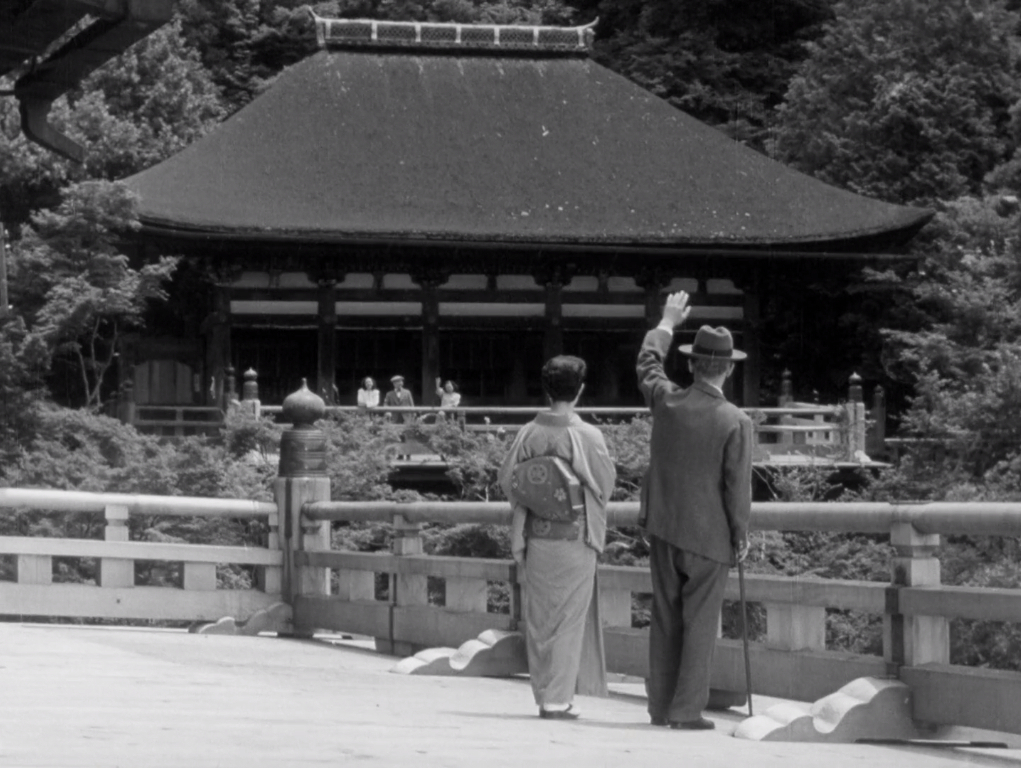
Late Spring
1949, directed by Yasujiro Ozu
In the second scene of Late Spring, as Professor Somiya works at home with Mr. Hattori, a man from the power company stops by to read the electricity meter. This interruption serves no obvious narrative purpose, and it’s passed over quickly. We can believe it’s a normal part of the flow of life, and most viewers will probably leave it at that. But hardly anything is extraneous in an Ozu film, and the meter reader’s visit should alert us to a couple further allusions to electricity, both of which will characterize Noriko’s unseen fiancé, Mr. Satake. First, Noriko tells her friend Aya that Satake looks like her family’s electrician; and second, when Noriko’s aunt lists possible nicknames for her prospective in-law (his name Kumataro means “bear boy”, and all the variants sound equally primitive), she finally settles on “Ku-chan” which means “little vacuum”.
Electricity is a shorthand for modernism, and everything we hear about Mr. Satake paints him as an avatar of modernity. He studied science at Tokyo University and works at a chemical company. He looks like the actor Gary Cooper, who is not only associated with America but also with baseball. Aunt Masa is the first to mention Satake, linking him to Cooper by reference to The Pride of the Yankees only minutes after two other baseball allusions: Noriko and Aya had traded baseball metaphors while talking about men (stepping up to bat, striking out, hitting a home run), followed by boys outside Masa’s house playing real-life baseball. The movie uses baseball and electricity to reinforce the sense that by marrying a man who looks like Gary Cooper, the old-fashioned Noriko is metaphorically entering the modern world.
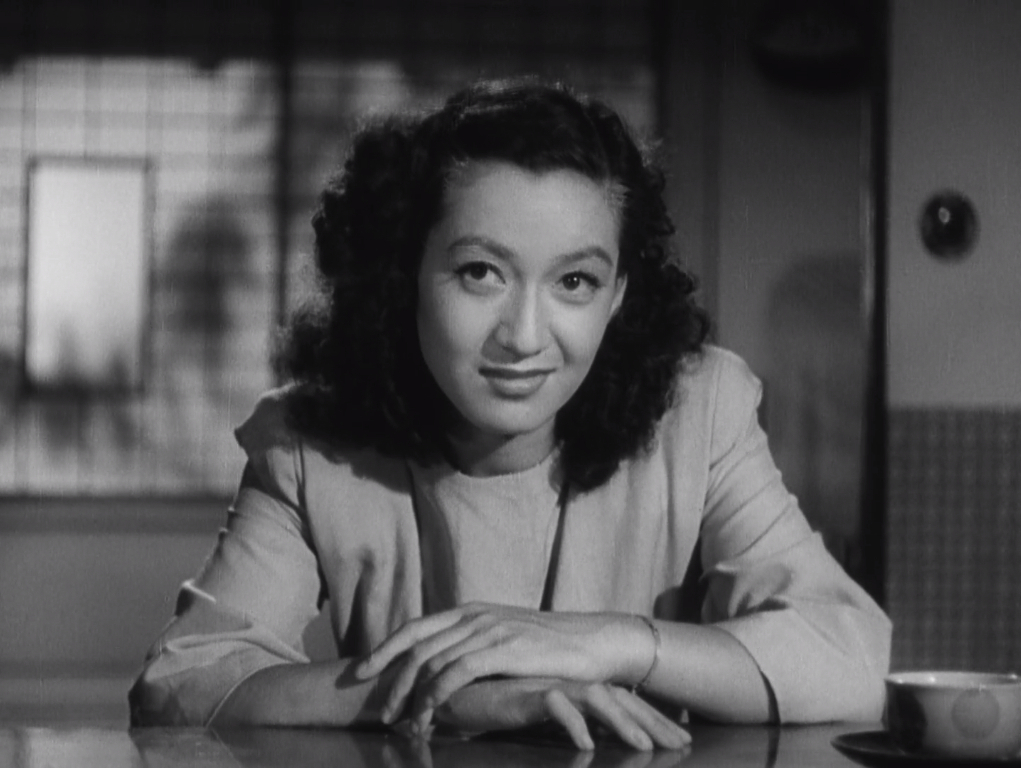
The tale of a 27-year-old woman leaving a stable life with her father to enter an arranged marriage showcases a mix of emotions: affection, jealousy, disappointment, resignation, and hope, and the actors make it easy to respond sympathetically. However the movie does everything in its power to encourage us to look beyond the poignant family drama. The story of Noriko and her father is part of a dialogue between tradition and modernity that the movie invokes again and again. The emotional arc is important, not merely because it leaves us with strong feelings, but because it lends the weight of humanity to a commentary on Japan’s rapid modernization. More generally, Late Spring is about how we can reconcile ourselves to the unsettling flow of change in our lives.
Ozu’s films work hard, each in its own way, to bring the abstract idea of time down to earth, to show how we live in it and adjust to its pull on our lives. His seasonal titles, of which Late Spring is the first, acknowledge this preoccupation. As in most Ozu films, manifestations of time are everywhere – tradition and progress, clock time and eternity, generational change – but they are ingrained so naturally that it’s easy to miss how purposefully each of these is brought into the film’s quiet argument about accommodating the disruptive force of time.
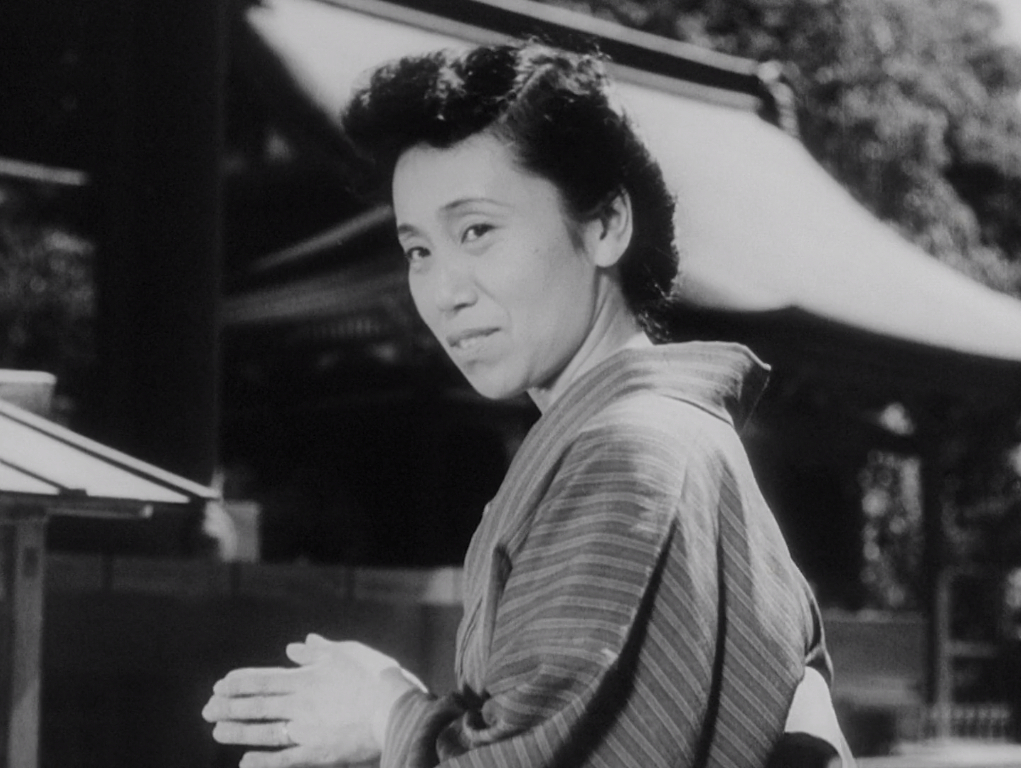
Signs of traditional Japanese culture are ubiquitous in Late Spring, yet instead of forming a mere background they’re emphasized well beyond their place in ordinary postwar Japanese life. The action opens with a tea ceremony in a classical Japanese pavilion where women wear traditional dress and display traditional manners. A Noh play fills seven whole minutes of screen time, far longer than the drama of the scene requires. Noriko’s father and aunt discuss her marriage arrangement at a landmark Hachiman shrine without anything in the plot dictating such a historic setting. The excursion to Kyoto, which takes more than fifteen minutes of screen time, is like a journey into an idealized Japanese past with temples, pagodas, a rock garden, and a hotel with traditional furnishings. Kyoto is world-famous for classical Japanese architecture, but Kamakura, where the family lives and most of the film is set, was the seat of a medieval shogunate and is close behind Kyoto as a kind of museum of traditional Japan. The sight of Noriko in her wedding dress is another conspicuous sign of Japanese cultural heritage. Even for native Japanese accustomed to their own traditions it would be hard not to notice that Late Spring means to highlight the country’s past.
At the same time, the movie is equally systematic in showing signs of encroaching modernity. Visits to Tokyo are like journeys into Japan’s future, with Western architecture and culture counterbalancing the historicism of Kyoto. Masa describes Noriko as old-fashioned, but her dress and hair are modern in most scenes; we’re even told that she used to bob her hair. Onodera’s daughter Misako wears similar fashions, and Aya is decidedly modern in every way. The leading males often wear suits and tuxedos. Noriko may be entering a traditional arranged marriage, but we hear several examples of women who break traditional norms: Misako wants to delay marriage, Aya married for love and got divorced, one of her and Noriko’s classmates is an unwed mother, and Masa gossips about a bride breaking decorum by overeating at her wedding. Noriko may not be literally marrying a foreigner, but the Gary Cooper comparisons open the door halfway to that breach of tradition.
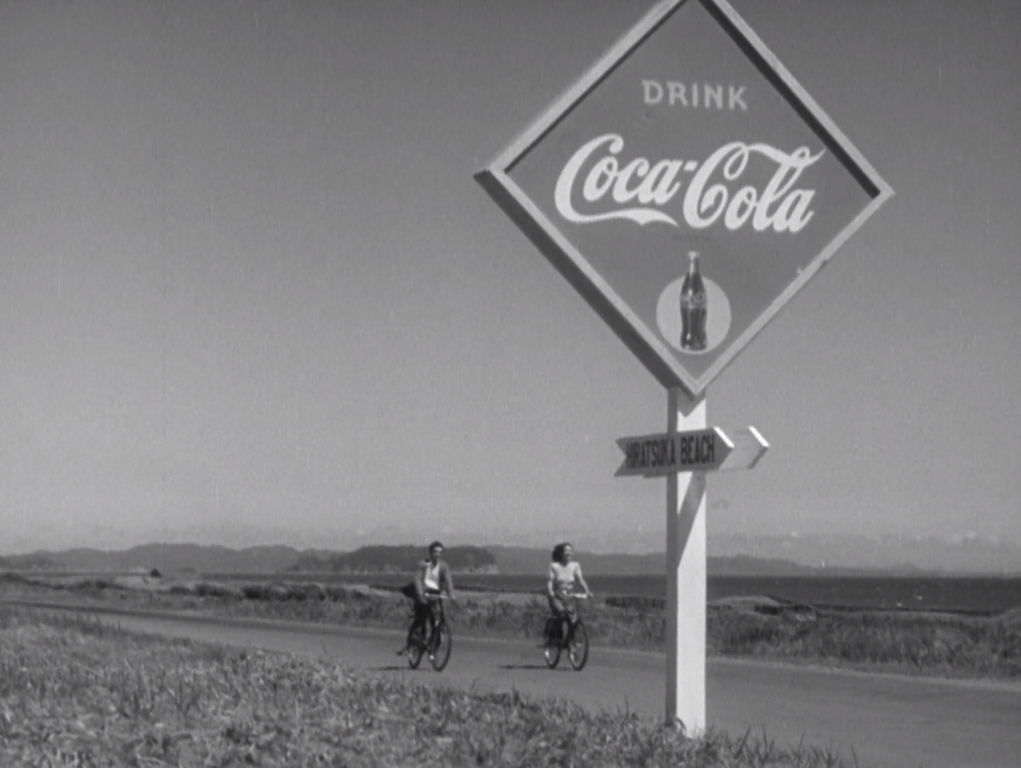
To Japanese eyes in the mid-20th century, modernism surely had more to do with globalization than with any particular style. Some of the Western design in Tokyo or inside Aya’s house may look traditional to Western eyes, compared to older Japanese architecture which ironically is closer to International Style modernism, but the imported styles signify sweeping cultural change. Marks of Western culture are almost as ubiquitous in Late Spring as reminders of traditional Japan, even if they don’t occupy as much space and time on the screen. Signs in the opening shot and on the bike ride show Japanese and English side by side, and Noriko and Hattori bicycle past a Coca-Cola advertisement. Characters mix Western and traditional clothing and accessories, often within scenes. Western music appears in the violin recital, the Lohengrin wedding march, the Westminster chimes, and various notes in Senji Itō’s score, not to mention Prof. Onodera’s spoken allusion to William Tell. Prof. Somiya writes on an Austrian economist, and he and Aya own several books in English.
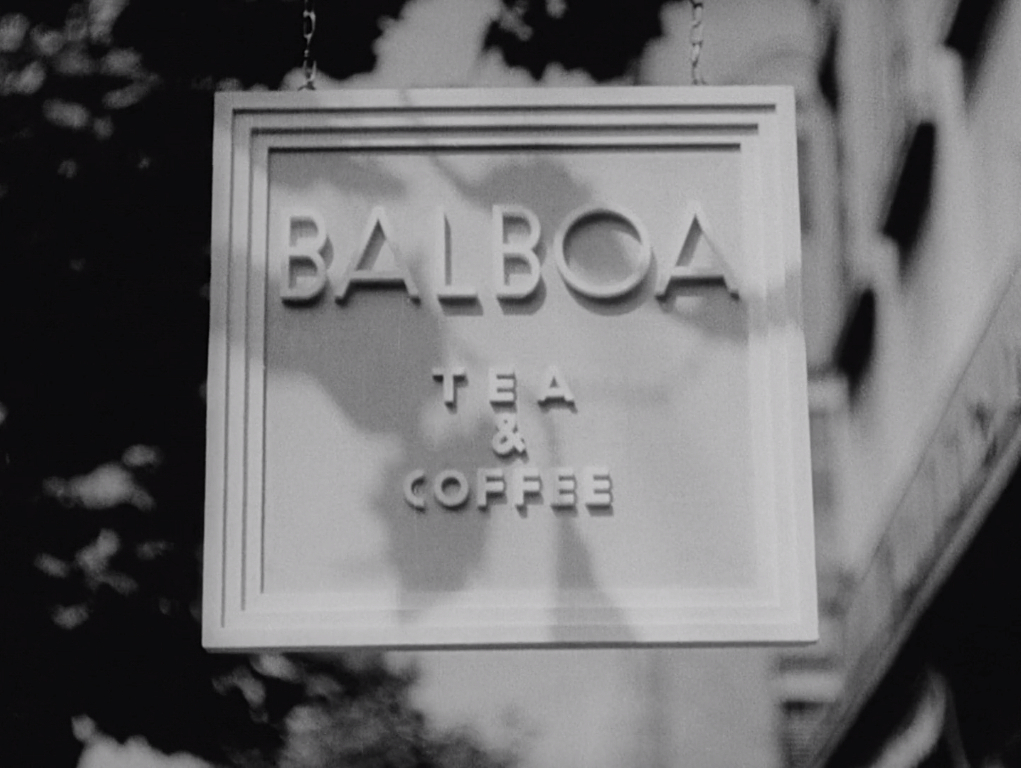
The café where Noriko and Mr. Hattori eat lunch is the most emphatic symbol of globalization. It’s called “Balboa Tea & Coffee” with “Balboa” written prominently on the wall above their table. Vasco Núñez de Balboa was the explorer who extended Europe’s reach west to the Pacific Ocean, symbolically bringing the West to the East, and tea and coffee moreover symbolize East and West. On top of that, shadows of leaves on the café sign create shapes resembling North and South America with Greenland above.
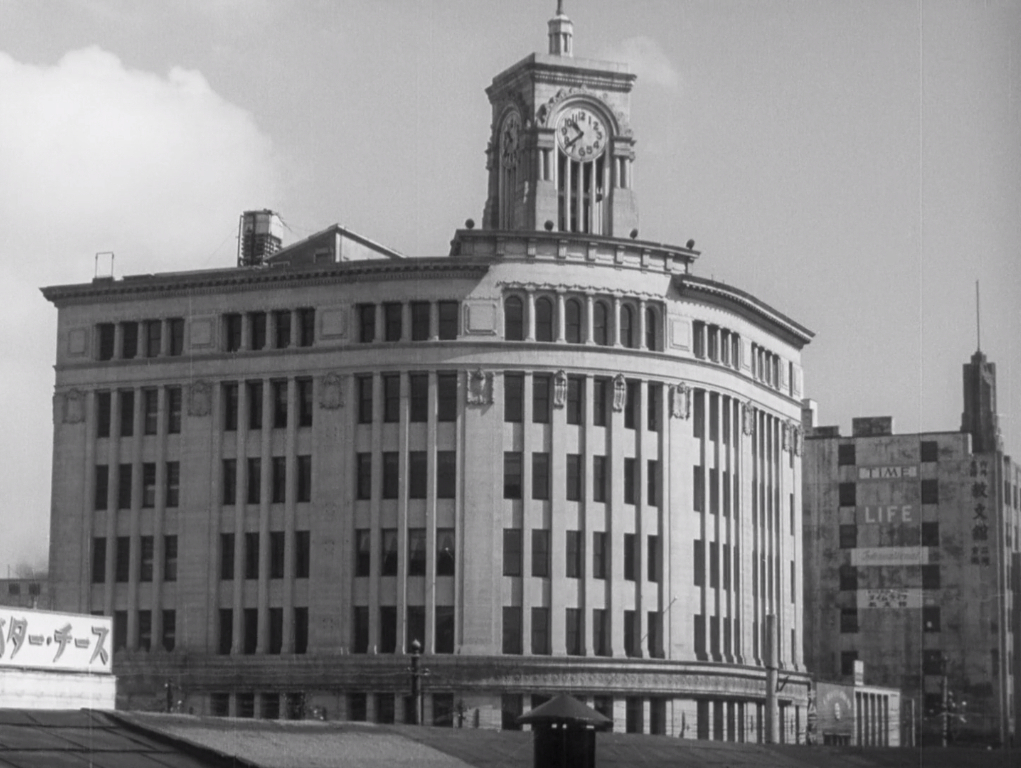
All these signs of cultural change fit into a broader picture of time itself and the flux it enforces on our lives. The dialogue begins with a question about time (“Were you early?”), and whenever the movie refers directly to time it does so with remarkably precise intention. At the end of Noriko’s last full day of bliss before learning of her family’s plans for her, the clock strikes midnight, and she puts out the kitchen light on the twelfth chime as if closing a chapter in her life. Tokyo is introduced by an office building with a clock tower, indicating that the modern capital represents time moving forward, but even more pointed is the wall of the neighboring building with a mural advertising the publishing company Time-Life; even when the angle changes, this mural appears around the other side, reminding us of the movie’s subject. Only three other clocks appear: one in the concert hall in Noriko’s absence, a grandfather clock in Aya’s house, and a cuckoo clock behind Noriko’s room upstairs. The latter two are clearly visible at the moments of Noriko’s greatest misery, indicating the oppressive weight of time and change on her.
In other Ozu films trains are symbolic of clock time, owing to their forward movement and their strong association with schedules. The correlation is a bit weaker in Late Spring, but the movie begins with a train station, Masa refers to “the 9:35”, and Masa’s son plays with a model train on a circular track right before Noriko’s marriage match is first mentioned, pointing to the cyclical nature of family life. The only scene on a train brings Noriko and her father to Tokyo, the city of forward-moving time, but when they go to Kyoto their train ride is not shown, and we only hear how they slept on it. The ocean, on the other hand, is usually associated with eternity in Ozu’s films, and Late Spring ends with a shot of waves on a beach, signaling the broader perspective on time that the ending reaches for.
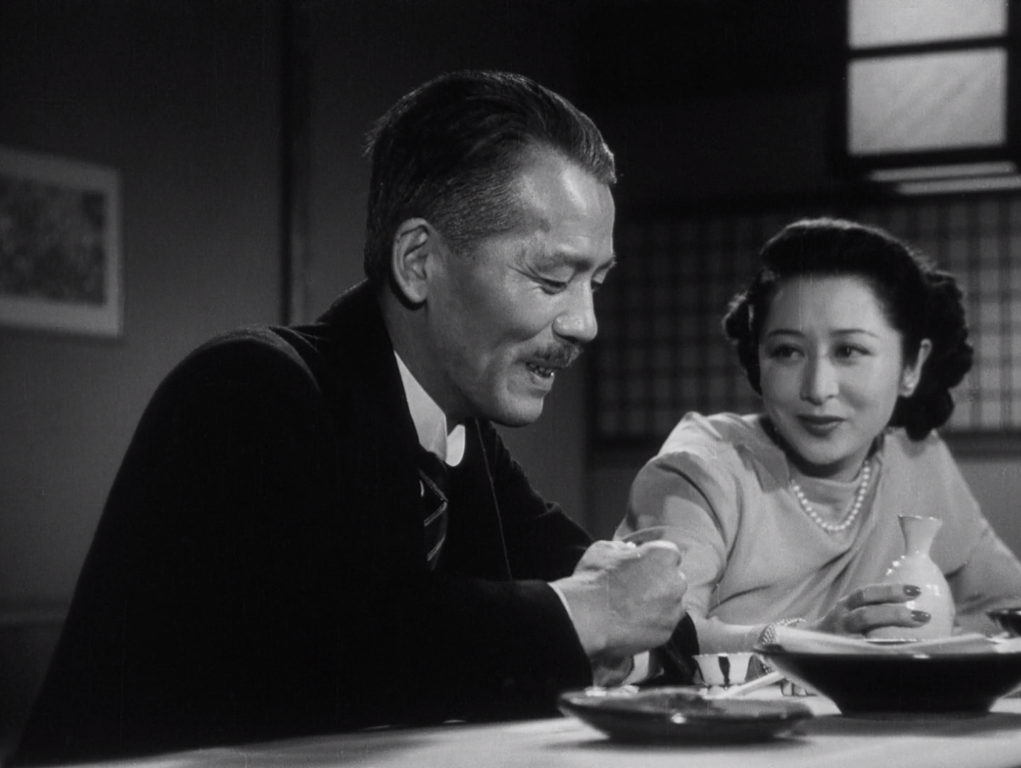
Of course describing Late Spring as the story of Noriko’s resistance to time and its inevitable changes is only one way of looking at it. On the surface it’s about her resistance to forming a couple. In a movie where this is the chief difficulty, it’s remarkable that we hardly ever see a single couple together: Satake never appears; Prof. Somiya’s wife is dead, and so apparently is Masa’s husband; Aya is divorced; the professor and Mrs. Miwa never actually form a couple; we only see Hattori’s bride in a photograph; and Prof. Onodera faces his wife across a temple courtyard. The only exception is the Somiyas’ maid Shige and gardener Seizo, whose relationship is only hinted at at the end when Prof. Somiya asks her to give his regards to Sei. Immediately before that there’s a kind of flirtation between Aya and the professor, but as long as Noriko’s present the only tangible hint of a couple is Noriko and Hattori, which turns out to be a false lead. The effect is somewhat like Tokyo Story, where each event is highlighted by its absence from our vision. Because we never see any couples, we can only conclude that the formation of a couple is a big event in Noriko’s world. At least it’s not something to be undertaken casually, and we can appreciate how this marker of generational change is so traumatic for Noriko.
Echoing Noriko’s feeling, Prof. Onodera’s daughter thinks of marriage as “life’s graveyard”, and the ending certainly has a funereal tone in contrast to so many movies where a couple’s union is cause for joy. But this equation between marriage and death has to be seen in a larger context. Late Spring is not merely about marriage but about change itself and how we accommodate ourselves to disruptions in tradition, in habit, or in the comforts of life that we take for granted. The story of a traditional woman preparing to marry a man who looks like Gary Cooper would have resonated with a country that was on the cusp of joining the Western world. It’s easy enough to say what everyone already knows – that what we call “tradition” is not something that’s been stable across the centuries, but rather the result of many cycles of disruption and upheaval. But saying this is never enough… Late Spring helps us to feel it.
CONNECTIONS:
Early Summer – Waves on a beach; Noriko’s decision to wed; Kamakura; Noh or Kabuki play; Chishu Ryu riding a train to Tokyo; boys playing with a model train; chimes and light off on the night before talk of marriage turns serious
The Flavor of Green Tea over Rice – Wako clock tower as a marker of time; conversation about a foreign screen idol’s face
Tokyo Story – Time defined by clocks & eternity, generational change, and tradition vs. modernity
The Music Room – Commentary on humans’ innate resistance to change
The End of Summer – Story of a father marrying off his daughter; synthesis of tradition and modernity; baseball allusion; Coca-Cola advertisements; idea of dating a foreigner; use of Kyoto to represent the past
Winter Light – Ceremony in opening scene interrupted by shots of nature; guiding spirit of ceremony undercut or at least altered over span of film, which ends with another ceremony
Band of Outsiders – Synthetic approach to tradition; inserted sign that reveals the movie’s subject
Time Walks Through the City – Contrast between tradition and modernity to express the passage of time
In the City of Sylvia – About reconciling to the endless cycles of historical change that disrupt our lives